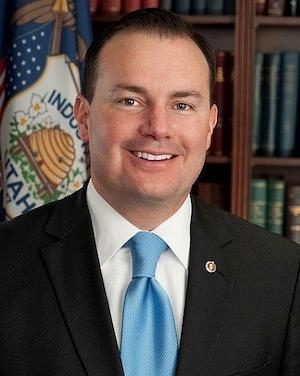Would Allow Cost-Sharing For Flights Operated By Private Pilots
U.S. Senator Mike Lee (R-UT) (pictured) has introduced the Aviation Empowerment Act. The bill aims to reduce regulations on America’s pilots by more tightly defining key terms in the Federal Aviation Authority’s 1986 Advisory Circular and creating a new class of pilot.

The legislation is in response to the FAA's ban on cost-sharing by passengers with private pilots. In 2014, the agency shut down the online "ride sharing" app FlyteNow which was used by pilots in an effort to find people willing to share expenses on a flight. The FAA ruled that such flights were the same as a commercial airline flight, and private pilots could not advertise those flights, despite a long tradition of using airport bulletin boards that seek passengers to share costs.
FlyteNow filed a lawsuit. The litigation went all the way to the U.S. Supreme Court, where it died when the high court declined to hear the case.
“Innovation is key to competition and accessibility,” Sen. Lee said. “This bill adds definition and clarity to existing rules that will help unleash that innovation in the aviation community. Studies and experience with cost-sharing services have proven to be safe and effective in other countries, and it is past time we enact them in our country."
The Aviation Empowerment Act separates private flights from commercial operations because the operator is not looking to make a profit from the flight. "Compensation" requires the intent to pursue monetary profit but does not include flights in which the pilot and passengers share aircraft operating expenses or the pilot receives any benefit," the legislation states.
‘‘Personal operator" means a person providing air transportation of persons or property for compensation or hire in aircraft that have eight or fewer seats, provided that the person holds a private pilot certificate pursuant to subpart E of section 61 of title 14, Code of Federal Regulations (or any successor regulation). A personal operator or a flight operated by a personal operator does not constitute a common carrier, as defined in paragraph (48), a commercial operation requiring a certificate under part 119 or 135 of title 14, Code of Federal Regulations (or any successor regulation), or a commercial operator."
The legislation goes on to state that "a person who holds a pilot certificate may communicate with the public, in any manner the person determines appropriate, to facilitate an aircraft flight for which the pilot and passengers share aircraft operating expenses in accordance with section 61.113(c) of title 14, Code of Federal Regulations (or any successor regulation) and that such flight-sharing operations under section 61.113(c) of title 14, Code of Federal Regulations (or any successor regulation) shall not be deemed a common carrier, as defined in paragraph (48) of section 40102(a) of title 49, United States Code, or a commercial operation requiring a certificate under part 119 or 135 of title 14, Code of Federal Regulations (or any successor regulation).
"That a personal operator, as defined in paragraph (49) of section 40102(a) of title 49, United States Code, operating under part 91 of title 14 Code of Federal Regulations (or any successor regulation) shall not be subject to the requirements set forth in part 121, 125, or 135 of title 14, Code of Federal Regulations (or any successor regulation)."
 ANN's Daily Aero-Term (05.17.24): Very High Frequency
ANN's Daily Aero-Term (05.17.24): Very High Frequency ANN's Daily Aero-Linx (05.17.24)
ANN's Daily Aero-Linx (05.17.24) ANN FAQ: Submit a News Story!
ANN FAQ: Submit a News Story! Classic Aero-TV: ANN Visits Wings Over The Rockies Exploration Of Flight
Classic Aero-TV: ANN Visits Wings Over The Rockies Exploration Of Flight Airborne Affordable Flyers 05.16.24: PRA Runway, Wag-Aero Sold, Young Eagles
Airborne Affordable Flyers 05.16.24: PRA Runway, Wag-Aero Sold, Young Eagles



